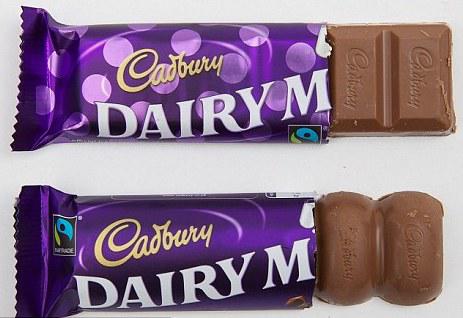Scientists at ETH find new way of making chocolate better and more eco friendly.
Yeah, saw that article this morning. Let’s hope the major manufacturers come on board with the new method.
Looking at how awful Cadbury’s has become due to the many innovations from Mondolez ![]() I would be cautious. Chocolate is an emotional subject and taste is highly subjective and complex.
I would be cautious. Chocolate is an emotional subject and taste is highly subjective and complex.
Unlikely any time soon. The new method is about using the previously unused starches to distill a sugary gell, thus replacing the sugar on chocolate. However, in Europe at least, sugar from beets will continue to be subsidised for the foreseeable future and sugar is cheaper than the new method.
You might have a few upscale brands possibly using it as a differentiator, but don’t expect wide scale adoption anytime soon.
The problem with cocoa is elsewhere; its in the fact that the cocoa farmers are so poor that they don’t own even the shirt on their back. The full value is captured by the traders and the chocolate producers.
Has it? CDM still tastes better than any Swiss milk chocolate. IMO.
I could see it becoming part of the chocolate makers association rules, just as they currently have to ensure no child labour is used, that in future they’ll have to use as much of the raw ingredients as possible.
Maybe. But yeah, not any time soon, I suspect.
They’ve increased the palm oil as a substitute for the more expensive cacao butter, lower % of cocoa mass, lower quality of cacao etc… plus more sugar & vanilla to cover up the soy lecithin needed to keep the chocolate liquid with the increased palm oil. Finally lower % of milk solids… remember the ads from when we were kids, a glass and a half of milk in every bar?
So they’ve essentially cheaped out wherever possible and it tastes like it. Although I have noticed that export bars of Dairy Milk typically found on the continent are even worse that British ones. They have upto 2 years of shelf life so I’m guessing even more chemical preservatives ![]()
Ohhh, Castro, you know how to put someone off chocolate ![]()
Don’t know the brand you folks are discussing but haven’t missed anything it seems.
As to the op - sounds great! Hope speculators won’t nip it in the bud.
As to the taste, I wonder why it would not be possible to still add some sugar just only a fraction of what they add now?
Sadly, you are mistaken. First of all, there is no legal requirement from the West for them to do so, they have “pledged” to stop using it many years ago, but unsurprisingly, the deadline keeps on changing. Last time I checked it was set for 2025, it is very likely they will miss it. However, child labor is an obvious thing to try to eliminate, but removing sugar and replacing it with a more expensive component is far more tricky to sell. Especially given the fact that cocoa prices (although normalized a bit) reached record prices this year and the structural problems with the old plantation, poor yields, climate change will only make things worse.
Something called Cadbury, owned by Mondelez, which used to be called Kraft Foods, but split. Mass produced shit.
You can always buy chocolate with up to 99% cocoa (and various other percentages), but this is not for every palate either. It very quickly becomes very bitter and brittle as opposed to soft.
Not necessarily, chocolate has very low amounts of water and this makes it an inhospitable environment for pathogens. Adding fruit, for example would obviously reduce the shelf life as it has more water than chocolate, but a chocolate bar has a very long shelf life as it is.
![]()
![]()
“Value engineering”. Feeding the consumer low-quality crap while increasing margins. Serve the crap in colourful and wasteful packaging to pretend it is “premium”.
Another tactic is shrinkflation, cutting the size whilst maintaining the same price. The bar of DM below is 8% lighter but has the same overall dimensions.

Mondolez haven’t even spared Tolberone.
Death is too good for their bastard accountants.
It’s common knowledge that child labour is used to collect the beans used in Lindt chocolate.
Apparently there are lower profits if they employ agents for
due diligence in this respect.
If anyone doubts this then they only have to consider that if Läderach can use slave labour within Switzerland, then it’s not beyond the realms of possibiltiy that Lindt doesn’t give a s**t about child labour in the developing world.
LOL, that’s the Swiss mountains as they were and as they will bei after all permafrost is gone.
Btw., I thought they are no longer allowed to use the Matterhorn emblem on the wrapping?!?
Only on the bars made in Bratislava, Slovakia.
The Bern produced bars can still show the Matterhorn.
Am I the only one that finds this statement seriously misleading?
I mean, it’s not making better chocolate, it’s making the same chocolate from the beans and then some other stuff that may taste like chocolate from the rest of the fruit.
And then the eco friendly - no, the original chocolate still gets made, and then you are replacing something that goes back as fertilizer into the environment with another industrial process with energy spent, chemicals and intercontinental transport and so on. How is that more ecological?
I presume the premise was that with this you could maybe reduce the amount of cocoa plants required and their impact on environment but I just don’t see that happening - the way the market works. Companies will always want to sell more of the premium product to make more money
At best they could have titled the article “scientists found new method to make chocolate substitute” - and whether that’s more eco friendly and economical than other substitutes is open to debate…
There are a few small (Swiss) chocolate producers who’re paying the cocoa farmers a fair price but a 100g chocolate costs around 8-9 chf…![]()
If I recall correctly they have even opened some small chocolate factories in those countries.
This is a revolutionary thing if you ask me and unfortunately it’s a “niche” market/customers for this type of things.
Not really, the “other stuff” are the remaining starches which are distilled into short chain carbs, aka sugar. So its replacing the beet / cane sugar in the chocolate with an alternative sugar source.
Again, not really. The cocoa pod is harvested, the bean is removed and then is left to ferment in containers. The remaining pulp and organic waste are typically just thrown away, there are a few uses, like animal feed and composting, but by and large, it just goes to waste. You probably imagine fermentation on the plantation and then just throwing the mulch as organic matter around the trees. This is not how it works, and it would create a number of other problems, like inviting fungal diseases due to the high heat, high humidity decomposition of organic matter.
No, as I explained, this new process is only replacing the sugar, so you will need the same amount of trees (more precisely yield of the trees) in order to produce enough cocoa and cocoa butter, which are the non-replaceable ingredients.
However, to stress again, the absolutely major problem in cocoa is that the farmers are screwed, dirt poor and left with no choice but to remain such. The total value is captured by Barry Callebaut, Cargill, OLAM, Mondelez, etc.
Here’s one, based in Geneva: Carrack
Do you know which others are ethical?
I believe Sprüngli are and i personally avoid Laderach. In Basel, confiserie Schiesser are using only high quality ingredients, however not sure if they’re able to source raw materials that are free from child labour as they are smaller

